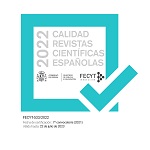Los (mal llamados) medios adecuados de solución de conflictos (MASC) y su aplicación a los conflictos jurídicos de las personas mayores: potencialidades, peligros y límites. (RI §426847)

The (wrongly called) appropriate methods of dispute resolution (“MASC”) and their application to legal disputes of elderly persons: potentialities, dangers and limits -
Ixusko Ordeñana Gezuraga
El debate en torno a los mecanismos extrajudiciales de resolución de conflictos se encuentra en primera línea, en nuestro ordenamiento jurídico, de la mano del Proyecto de Ley de Medidas de Eficiencia Procesal del Servicio Público de Justicia. Siendo el autor defensor de los mismos, en cuanto fórmula para la mejora del sistema de justicia, expone su teoría al respecto, contrastándola con la iniciativa legislativa mentada. Anticipándose a lo que va a ser un rasgo de nuestro ordenamiento jurídico (los conflictos jurídicos protagonizados por personas mayores), muestra, al tiempo, las bondades de las técnicas extrajudiciales al efecto. Analiza, asimismo, sus peligros y límites.
I. CUANDO LA ACTUALIDAD MANDA: CONTEXTO Y OBJETIVOS DE LA INVESTIGACIÓN. II. LA OPCIÓN POR LOS (MAL LLAMADOS) MEDIOS ADECUADOS DE RESOLUCIÓN DE CONFLICTOS (MASC). II.1. Contexto de su aparición: sobre la forma de mejorar la jurisdicción. II.2. Configuración originaria y evolución de los mecanismos extrajudiciales. II.3. Nuestra construcción del sistema de justicia: el Derecho jurisdiccional diversificado.II.4. La apuesta del prelegislador español por las MASC: líneas generales y lectura crítica. 2.4.1. Presentación. 2.4.2. Configuración, fundamento y características. 2.4.3. ¿Por qué es errónea la designación MASC? 2.4.4. Sobre el nuevo sistema de justicia. 2.4.5. Los MASC como requisito de procedibilidad. III.ESPAÑA EL PAÍS CON LA POBLACIÓN MÁS ENVEJECIDA DEL MUNDO Y LA RESOLUCIÓN DE SUS CONFLICTOS. III.1. El conflicto jurídico a resolver. 3.1.1. Definición e identificación de sus elementos. 3.1.2. Las personas que lo protagonizan 3.1.3. Las materias sobre las que versan. IV. LA APUESTA POR LOS MECANISMOS EXTRAJUDICIALES PARA LA RESOLUCION DE LOS CONFLICTOS JURÍDICOS DE LAS PERSONAS MAYORES. IV.1. Justificación y elementos principales. IV.2. Cuando los inconvenientes de la vía jurisdiccional se amplían. IV.3. Cuando las bondades de los mecanismos extrajudiciales se amplían. V. SOBRE LOS PELIGROS Y CONSIGUIENTES LÍMITES DE LA APLICACIÓN DE LOS MECANISMOS EXTRAJUDICIALES A LOS CONFLICTOS JURÍDICOS DE LAS PESONAS MAYORES. V.1. Presentación de la cuestión. V.2. La autonomía de la voluntad: alfa y omega de los mecanismos extrajurisdiccionales. V.3. La buena fe: guía de los mecanismos extrajurisdiccionales. V.4. El auxilio y control judicial en el marco del Derecho jurisdiccional diversificado. VI. REFLEXIÓN FINAL. VII. BIBLIOGRAFÍA.
The debate around extrajudicial conflict resolution mechanisms is at the forefront in our legal system, thanks to legislative proyect on Procedural Efficiency Measures of the Public Justice Service. The author, their defender as a formula for the improvement of the justice system, exposes his theory in this regard, contrasting it with the aforementioned legislative initiative. Thus, anticipating what is going to be a feature of our legal system (legal conflicts involving older people), he shows, at the same time, the benefits of extrajudicial techniques for this purpose. Their dangers and limits are also analyzed.
I. WHEN CURRENT EVENTS RULE: CONTEXT AND OBJECTIVES OF THE RESEARCH. II. LA OPCIÓN POR LOS (MAL LLAMADOS) MEDIOS ADECUADOS DE RESOLUCIÓN DE CONFLICTOS (MASC). THE OPTION FOR THE (WRONGLY CALLED) APPROPRIATE METHODS OF CONFLICT RESOLUTION (AMCR). II.1. Context of its appearance: on how to improve jurisdiction II.2. Original configuration and evolution of extrajudicial mechanisms II.3. Our construction of the justice system: diversified jurisdictional law II.4. Spanish pre-legislator's commitment to the “MASC”: general lines and critical reading 2.4.1. Presentation. 2.4.2. Configuration, foundation and features. 2.4.3. Why is wrong “MASC” designation? 2.4.4. About the new justice system. 2.4.5. The “MASC” as a procedural requirement. III. SPAIN, THE COUNTRY WITH THE OLDEST POPULATION IN THE WORLD AND THE RESOLUTION OF ITS CONFLICTS III.1. Legal conflict to resolve. 3.1.1. Definition and identification of its elements 3.1.2. People who star in it. 3.1.3. Subjects they deal with. IV. COMMITMENT TO EXTRAJUDICIAL MECHANISMS FOR THE RESOLUTION OF LEGAL CONFLICTS OF ELDERLY PEOPLE IV.1. Justification and main elements. IV.2. When inconveniences of jurisdictional way are expanded IV.3. When benefits of extrajudicial mechanisms are expanded. V. ON THE DANGERS AND CONSEQUENT LIMITS OF THE APPLICATION OF EXTRAJUDICIAL MECHANISMS TO LEGAL CONFLICTS OF ELDERLY PEOPLE V.1. Presentation of the issue. V.2. The autonomy of the will: alpha and omega of extrajurisdictional mechanisms. V.3. Good faith: guide to extrajurisdictional mechanisms V.4. Judicial assistance and control within the framework of diversified jurisdictional law.VI. FINAL REFLECTION VII. BIBLIOGRAPHY.

 DIRECTOR
DIRECTOR